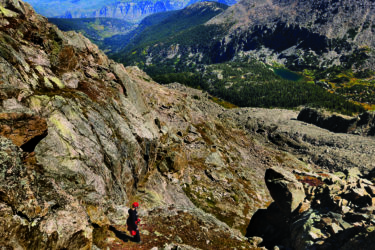The Local newsletter is your free, daily guide to life in Colorado. For locals, by locals.
Any self-respecting Coloradan knows there’s no such thing as the offseason. But whether you’re itching to ski, snowshoe, or hike, it can be tough to plan for spring’s fickle weather and hairy snow conditions. We asked Golden Mountain Guides owner Ben Coryell, who has led shoulder-season trips in the Rockies for 15 years, for his best safety tips for keeping the stoke alive.
Read More: A Colorado Ski Guide Shares His Best Tips for Heading Into the Backcountry Safely
1. March weather in Colorado is “variable at best,” Coryell says. (And above 9,500 feet? “True winter till May.”) Don’t rely on your iPhone weather app to paint an accurate picture in the mountains. Instead, consult multiple forecasts and models (Coryell likes noaa.gov and windy.com) for a more precise prediction of the conditions.
2. Like what you see? Check the avy bulletin at avalanche.state.co.us. Updated daily, these reports by the Colorado Avalanche Information Center reveal sketchy, slide-prone slopes—including extremely dangerous “persistent slabs.” Unless you have ample avalanche training, avoid all spots labeled with that term, Coryell says.
3. Anything steeper than 30 degrees is probably too risky when there’s an avalanche threat, so move to Plan B. Choose a flatter route in the area or visit a nearby trailhead that’s lower in elevation. A Coryell-approved safe bet for Front Rangers: Caribou Hill Trail near Nederland.
4. One of the most common ways folks get stuck in terrain that’s too heady is by improvising. “Come up with a plan with your group members before you get to the trailhead,” Coryell says. Specify the footpaths or routes you plan to take, as well as your start and turnaround times.
5. Stow a few winter-specific items (extra socks, backup gloves) in your pack, plus a repair kit capable of “MacGyvering your gear, whether that’s a snowshoe binding or a ski pole basket,” Coryell says. Traveling through avalanche terrain? Make sure you have a beacon, probe, and shovel—and know how to use them.









